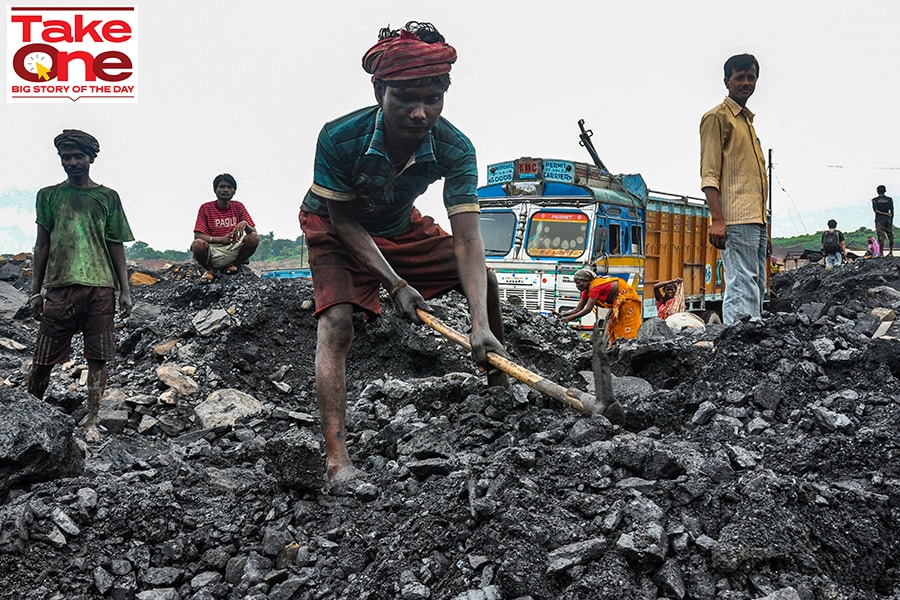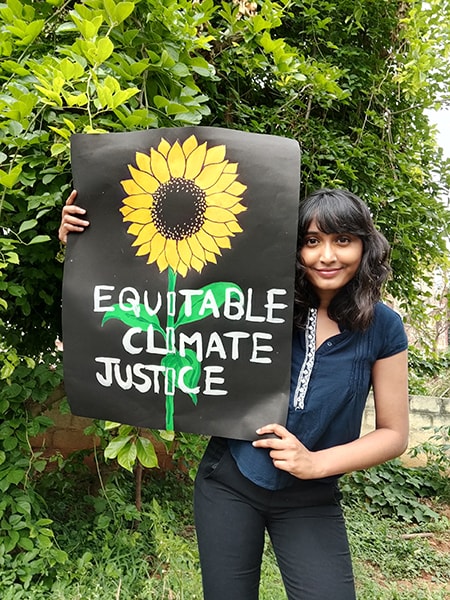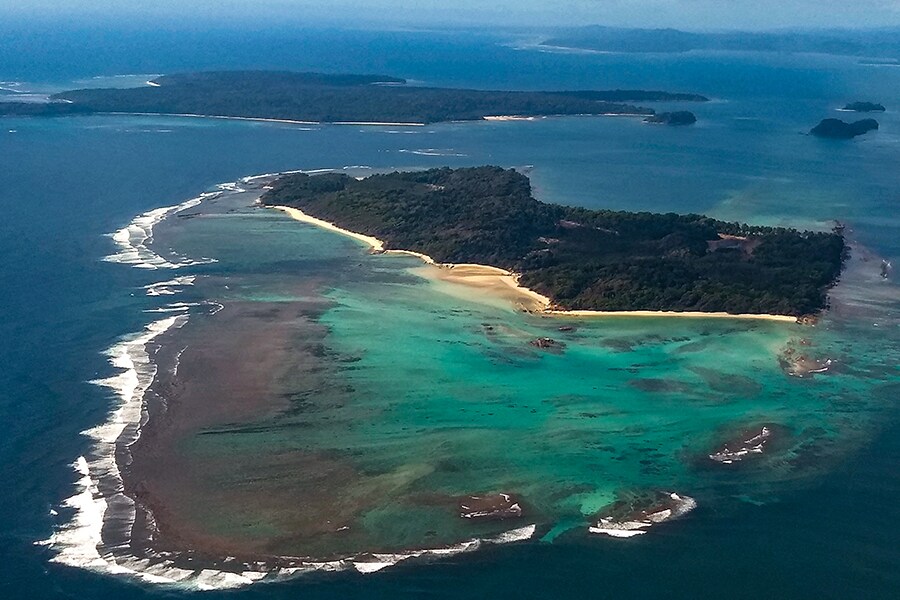We hoped their commitments would be sufficient to de-escalate the devastating climate events almost all of us are now familiar with: Droughts, wildfires, landslides, storms and floods. We hoped they would take action serious enough to stall the existential threat of climate change to the human species.
Prominent among the leaders present were US President Joe Biden and Indian Prime Minister Narendra Modi, the second and third largest greenhouse-gas emitters of the world respectively.
India, a key player in the climate negotiations, has the leadership ability to innovate development models that protect the environment from early planning stages to execution. We have led the world in revolutionising infrastructure in various sectors, including telecom and information technology (IT). Will we make adequate commitments to stall the earth’s climate crisis in our next phase of development?
Even as leaders travelled onward from the Trevi Fountain and Rome to Glasgow, United Kingdom (UK) to articulate their countries’ commitments, travels were disrupted by torrential rain and gusty winds up to 80mph in the UK, co-host with Italy of COP26.
“We are digging our own graves," warned United Nations Secretary General Antà³nio Guterres as COP26 opened on October 31, emphasising the necessityof countries seriously committing to this “last chance event".
The disappointment of the largest emitter China’s absence from the COP26 table was followed by commitments from the USA, whose President Biden, though he said “America is back" to the climate negotiations, had failed to achieve strong climate legislation within his own country.
Prominent among those who watched and wished from the side-lines were young people who will inherit the earth fashioned by leaders of our time.
“Blah, blah, blah," said 18-year-old Greta Thunberg cynically, as the co-founder of the youth movement against climate change ‘Fridays For Future’ protested world-leaders’ lack of enforceable accountability and the continuing rise in greenhouse gas emissions.
Young people, nevertheless, continued to hope against hope. India’s PM Modi, now centre-stage, did not commit to net-zero by mid-century. Instead, he placed blame for our current predicament on China, USA and the ‘developed’ nations and denied that India played any significant role in increasing emissions or in accelerating climate change. Modi then articulated India’s own commitment to achieve net-zero fifty years in the future and twenty years beyond the target of mid-century, in 2070, as a historic achievement.
![]() Disha Ravi, a young climate activist is among the 65 percent of the worlds youth who will be most impacted by climate change and want climate-friendly policies far beyond existing ones.
Disha Ravi, a young climate activist is among the 65 percent of the worlds youth who will be most impacted by climate change and want climate-friendly policies far beyond existing ones.
Although India will not meet the UN’s urgent deadline, Modi explained, in ‘panchamrita’, or five elixirs offered in prayer, India will raise its clean energy capacity to 500GW meet 50 percent of its requirements through renewables reduce carbon emissions by one billion tonnes reduce carbon intensity to less than 45 percent of its economy by 2030 and achieve net-zero by 2070.
Modi also asserted India’s moral right to continue to increase emissions for the next few decades in the larger context of historical emissions, and called for $1 trillion towards climate financing from developed countries. “Justice would truly be served if pressure is put on those countries that have not lived up to their climate finance commitments," he said.
Modi’s international commitment to net-zero by 2070, in an unforeseeable future fifty years away, is set within today’s national reality of the Pradhan Mantri Gati Shakti National Master Plan [unveiled by Modi on August 15] to spend $1.3 trillion (Rs100 trillion) on new, mainly carbon-based infrastructure steeply increasing reliance on coal amendments to forest protection laws to permit mining and infrastructure concrete-based development in India’s most fragile biodiverse hotspots increasingly devastating climate event and India’s position as one of the most polluted countries in the world and among the most vulnerable to sea-level rise.
“Secure global net-zero by mid-century" is the stated endeavour of the COP26. Toward this end, required actions are led by the goal to “accelerate the phase-out of coal".
Reiterating that coal will continue to be the major fuel for power in India for the next 35-40 years, Union Minister of Coal, Mines and Parliamentary Affairs Pralhad Joshi said in October, just before COP26, that India’s coal-power is expected to double by 2040.
An independent report by New Delhi-based Council on Energy, Environment and Water (CEEW) has predicted that India’s coal-power must peak by 2040 before dropping by 99 percent thereafter to meet the COP26 commitment.
![]() Our most Eco-fragile forests of the Andaman & Nicobar Islands, where species face dire threats of extinction, palm oil monocultures are planned to replace biodiversity hotspots.
Our most Eco-fragile forests of the Andaman & Nicobar Islands, where species face dire threats of extinction, palm oil monocultures are planned to replace biodiversity hotspots.
Image: Hari Kumar / AFP
The government, however, has not initiated a roadmap or policy measures to achieve the projected 99 percent drop after 2040. As India begins the long wait for 2040, when coal will first start getting phased out, it actively escalates coal consumption in the meantime. India is the world’s second-largest coal user already, ahead of the US and behind China, with 70 percent coal-based power and with the fastest-accelerating power requirements in the world.
India loses 20 percent of power generated in grid transmission and delivery inefficiencies, the US Energy Information Administration estimates, which is one of the highest grid losses in the world and more than twice the world average.
Vaibhav Chaturvedi, CEEW fellow and lead author of the CEEW report explains that “coal delivery mapping is a pretty sophisticated exercise and has never happened in India". Chaturvedi goes on to add that CEEW is creating India’s first Climate Risk Atlas.
On October 29, the same day that PM Modi landed in Rome for the G-20 Summit, Union Coal Minister Joshi tweeted, “Sought early resolution of land-related issues of @mahanadicoal". The tweet refers to clearances for 14 new coal blocks, some in biodiverse forests in Odisha. These are among the 40 new sites marked for coal mining in forests as part of the ‘self-reliant India’ plan.
The next generation will curse governments if they do not start using available coal, Joshi added at the launch of the coal-block auction, in a backdrop of intense youth-led protests ever since the proposal first became public 16 months ago in June 2020.
The People’s Climate Vote, the world’s biggest survey of public opinion on climate change by the United Nations Development Programme (UNDP), comprises more than half a million people under the age of 18 from across 50 countries, including India. It estimates that more than 65 percent of people under 18 years of age, those who are not yet eligible to vote, feel that climate change is a global emergency. They support action and climate policies to protect the earth far beyond those that currently exist.
Disha Ravi, a 23-year-old climate activist and co-founder of Fridays For Future, is among the young people surveyed by the UNDP who feel strongly about the climate emergency. She says, “We did not even talk about coal at COP26. I understand that the shift away from coal cannot be overnight because we need just transition for those whose livelihoods depend on it, but to achieve climate targets, we need to put climate at the centre of every single policy including phasing out coal-based power starting immediately."
Rakesh Kumar, former director, National Environment Engineering and Research Institute (NEERI), concurs. “If climate resilience is put centre-stage across development sectors, we have the technical and intellectual capability. India can innovate fresh approaches to build climate-friendly infrastructure if we invest in R&D to develop new, green development models now."
These new models also require that we include ways to preserve our most fragile forests. Curtailing deforestation is another important goal of the COP26. Forests are important carbon sinks, absorbing more carbon dioxide than they release.
However, India did not sign the commitment that 75 percent governments did to “deliver sustainable trade and reduce pressure on forests". An Indian representative said, “We had asked the word ‘trade’ to be removed, but they did not agree. So, we have not signed the declaration."
“Going extinct is a bad thing," says a Tyrannosaurus-Rex (T-Rex) dinosaur speaking from a lectern to a modern audience in a video released by the United Nations Development Programme ahead of COP26. “I know a thing or two about extinction."
Twenty-two Indian species were tabled extinct in the Lok Sabha in 2019. Hundreds of others are listed as critically endangered, which include mammal species, like the Andaman white-toothed shrew and Nicobar white-tailed shrew endemic to the fragile coral-reefs of the Andaman and Nicobar Islands.
In these vulnerable Islands and in our North-Eastern rainforests, replacement of old-growth forests with commercially tradable palm-oil crops are new development models on the drawing board. To pave the way, draft amendments to the Forest Conservation Act have been circulated and have been bitterly opposed.
Bittu Sahgal, president of the Bombay Natural History Society, Asia’s oldest conservation NGO, says that in Indonesia and Malaysia, monoculture palm-oil plantations have decimated biodiverse rainforests and habitats and have driven orangutan Great Apes to near-extinction. “We need a mapping exercise to restrict oil-palm cultivation only to existing cultivated farm-lands," he says.
Shrews and Great Apes are not the only ones that face extinction. Science tells us that the conditions under which hominid species like Neanderthals became extinct were led by effects of pre-historic climate change.
“Driving yourselves extinct? In 70 million years, that’s the most ridiculous thing I’ve ever heard. At least we had an asteroid. What’s your excuse?" says T-Rex from the UNDP video.
However, CEEW’s Chaturvedi believes, even after accounting for and accepting the human and economic costs of climate disasters, increased coal reliance is the only economically realistic one. India’s “climate risks will only increase", he says.
Most worryingly, he believes the reality is that “suddenly you cannot have so much of ramping up of solar power", since it cannot be used in large quantities due to the “mess in the distribution". This leaves new coal-based power as the only viable source of large-scale energy in the coming decades.
Chaturvedi sums up our situation. He says that “even after this choice, it is not going to be a cake-walk" to achieve net-zero by 2070. “We will see what will happen to even the 2040 target our government has undertaken. Only time will tell us."
“As we track the progress of climate mitigation, we must also track climate finance," Modi said in Glasgow.
In 2021-22, Finance Minister Nirmala Sitharaman’s budgetary allocation to environment was a comparatively paltry Rs. 2869.96 crores, a reduction of Rs 230.07 crores from the environmental budget of Rs 3100 crore in 2020-21.
Alongside massive new infrastructure building, new coal plants and mines, India is diluting environmental safeguards and the very laws which protect from climate change, including the Forest Conservation Act, and others.
India need not re-enact the mistakes of ‘developed countries’ failed development models that have led to the present-day climate catastrophe. Unfortunately, India’s financial investments and policy decisions do not balance environment with development.
India does not have a policy-led, actionable road-map to phase out coal now or in the future, or to save our ancient forests. We are not making budgetary allocations in proportion to balance our development aspirations and climate ambitions. We are not investing in research and development (R&D). We are not choosing to tap our excellence in technological innovation to achieve our own true leadership potential and avert the climate crisis.
CEEW’s Chaturvedi, nevertheless, explains that at COP26, at least we have upped our climate ambition, but “my bottom-line is that these are all trade-offs. This is the trade-off we have made: Live with the risk [of climate change] for some time".
“Don’t choose extinction. Save your species before its’s too late," Concludes T-Rex in the UNDP video.
By 2070, when India is destined to meet its climate pledges of today, 18-year-old Greta Thunberg will be 77-years-old and 23-year old Disha Ravi will be 82, older than most world leaders of today. They will live in a very different world. That world will be set in the Earth that will result from our lack of urgency today.
My phone rings. It is my daughter. She has heard the news and she sounds numb. She feels far away. She can never experience my world of 50 years ago when the climate emergency did not form any part of our collective consciousness. And I can never imagine and will never experience the other distant world 50 years from now, beyond safe climate limits for the human species. Too late. Much too late.
(Sumaira Abdulali is the convenor of Awaaz Foundation)

 A coal mine in Jharkhand: PM Modi asserted India’s moral right to continue to increase emissions in the context of historical emissions by developed nations
A coal mine in Jharkhand: PM Modi asserted India’s moral right to continue to increase emissions in the context of historical emissions by developed nations Disha Ravi, a young climate activist is among the 65 percent of the worlds youth who will be most impacted by climate change and want climate-friendly policies far beyond existing ones.
Disha Ravi, a young climate activist is among the 65 percent of the worlds youth who will be most impacted by climate change and want climate-friendly policies far beyond existing ones. Our most Eco-fragile forests of the Andaman & Nicobar Islands, where species face dire threats of extinction, palm oil monocultures are planned to replace biodiversity hotspots.
Our most Eco-fragile forests of the Andaman & Nicobar Islands, where species face dire threats of extinction, palm oil monocultures are planned to replace biodiversity hotspots.